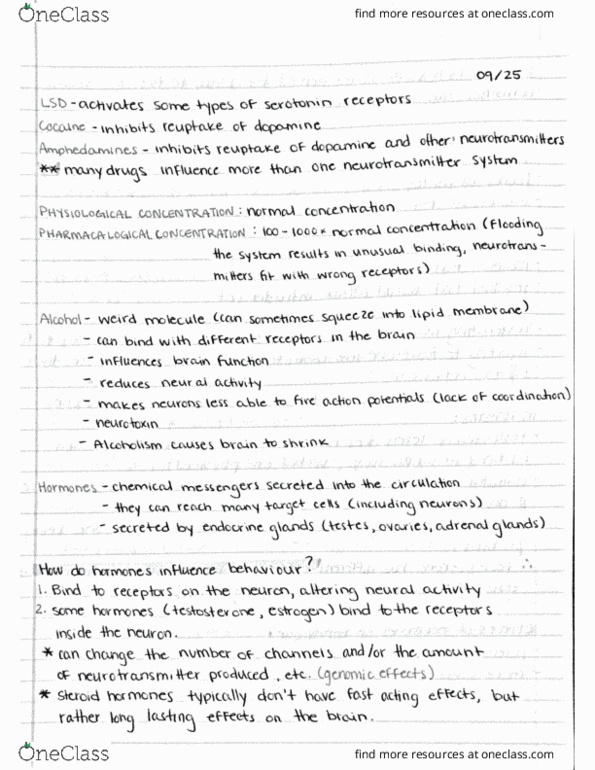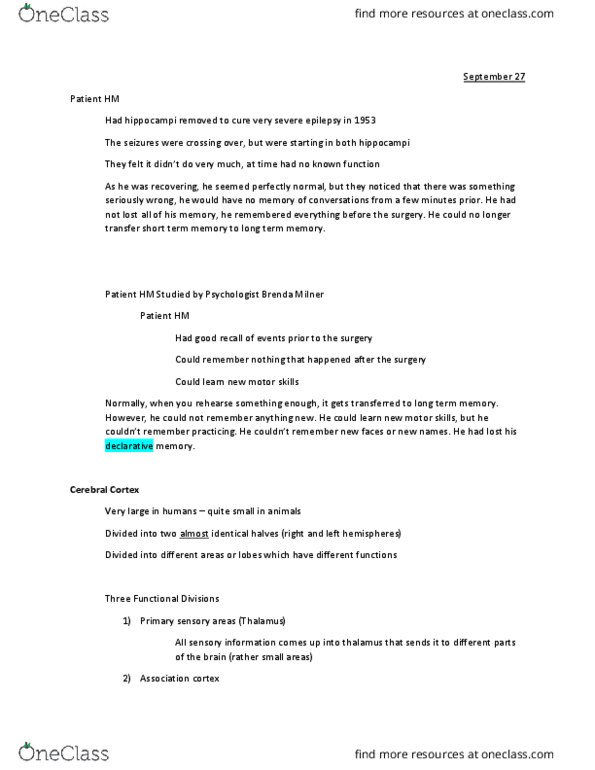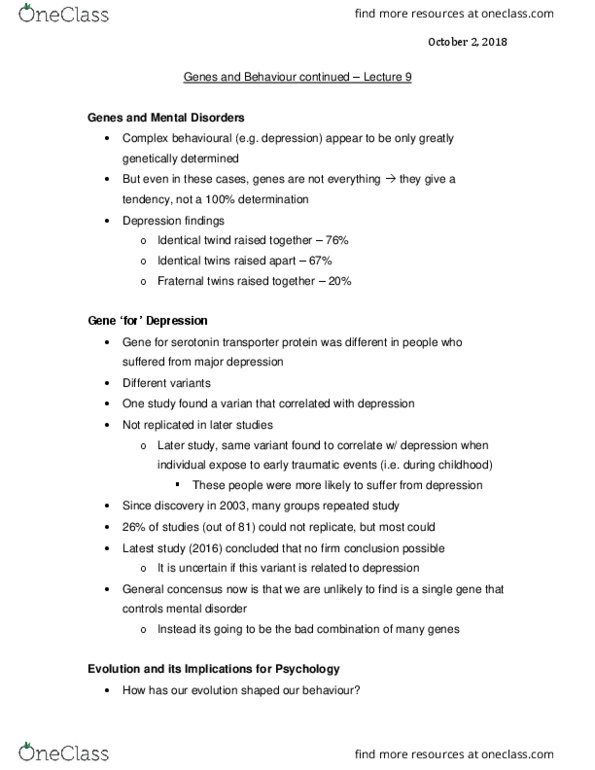PSYO 1011 Lecture Notes - Lecture 8: Primary Sensory Areas, Brenda Milner, Parietal Lobe
PSYO 1011 verified notes
8/26View all

September 27
Patient HM
Had hippocampi removed to cure very severe epilepsy in 1953
The seizures were crossing over, but were starting in both hippocampi
They felt it didn’t do very much, at time had no known function
As he was recovering, he seemed perfectly normal, but they noticed that there was something
seriously wrong, he would have no memory of conversations from a few minutes prior. He had
not lost all of his memory, he remembered everything before the surgery. He could no longer
transfer short term memory to long term memory.
Patient HM Studied by Psychologist Brenda Milner
Patient HM
Had good recall of events prior to the surgery
Could remember nothing that happened after the surgery
Could learn new motor skills
Normally, when you rehearse something enough, it gets transferred to long term memory.
However, he could not remember anything new. He could learn new motor skills, but he
couldn’t remember practicing. He couldn’t remember new faces or new names. He had lost his
declarative memory.
Cerebral Cortex
Very large in humans – quite small in animals
Divided into two almost identical halves (right and left hemispheres)
Divided into different areas or lobes which have different functions
Three Functional Divisions
1) Primary sensory areas (Thalamus)
All sensory information comes up into thalamus that sends it to different parts
of the brain (rather small areas)
2) Association cortex

Don’t know exactly what it is. Between areas of information, combining things
like sight and sound, combining information.
3) Primary motor area (Brainstem, Spinal Cord)
Area that sends commands to the muscles to allow movement (also small)
Occipital lobe
Critical for processing visual information
Mostly a primary sensory area
At the very back of the head
Eye sends info to thalamus, thalamus sends it to occipital lobe
Vision in the Brain
Vision from the left visual field (both eyes) goes to the right side of the brain
Vision from the right visual field goes to the left side of the brain
All sensory systems do this
Primary Motor & Somatosensory Cortices
Also crosses over with tactile senses (left arm = right side of brain, etc.)
Somatosensory cortex takes in all tactile info (thin strip in parietal lobe)
Arm, leg, finger, mouth, each goes to different areas of the cortex
The amount of cortical tissue used for tactile info for a body part depends on
how sensitive that particular body part is
Motor Cortex controls muscle movement
In very first part of frontal lobe
How much motor cortex tissue is devoted to a body part is dependent on how
much control you need in that body part (overrepresented hand)
Things cross over in both Somatosensory and Motor cortices
Right handed = left side of brain dominant (depends on how brain develops)
Brain & Body Connections
Connections between primary sensory/motor cortex and body are Contralateral
Touch sensations on body’s left = right parietal lobe

Left primary motor cortex = right side of body
Temporal Lobe
Processing of visual and auditory information – particularly auditory
Visual info goes first to occipital, then to temporal lobe
Visual and auditory processing must be combined, visual takes longer
Auditory info stops in brainstem, then to thalamus, then to temporal lobe
Not symmetrical, because inmost people, the language is in the left temporal lobe – small
amount in right
On the side of head (temples)
Language Ability Requires Multiple Brain Areas:
Broca’s Area
Left frontal lobe (right next to motor cortex where mouth is controlled)
Important for speech production (motor)
Being able to talk is difficult, and Broca’s area is needed for it
Damage in this area means you can understand speech, but can’t speak yourself
Wernicke’s Area
Left temporal lobe
Important for speech comprehension
Takes info from temporal lobe
Damage would mean that you could hear, but could not understand language
Info comes from primary auditory area, message sent to Wernicke’s area to
hear/understand, signal gets sent to Broca’s area to respond, sends message to motor
cortex to make the movements
Left Hemisphere Damage
Broca’s Area
Left frontal lobe
Damage produces deficit in speech production
Document Summary
Had hippocampi removed to cure very severe epilepsy in 1953. The seizures were crossing over, but were starting in both hippocampi. The(cid:455) felt it did(cid:374)"t do (cid:448)er(cid:455) (cid:373)u(cid:272)h, at time had no known function. As he was recovering, he seemed perfectly normal, but they noticed that there was something seriously wrong, he would have no memory of conversations from a few minutes prior. He had not lost all of his memory, he remembered everything before the surgery. He could no longer transfer short term memory to long term memory. Had good recall of events prior to the surgery. Could remember nothing that happened after the surgery. Normally, when you rehearse something enough, it gets transferred to long term memory. He could learn new motor skills, but he (cid:272)ould(cid:374)"t re(cid:373)e(cid:373)(cid:271)er pra(cid:272)ti(cid:272)i(cid:374)g. he (cid:272)ould(cid:374)"t re(cid:373)e(cid:373)(cid:271)er (cid:374)e(cid:449) fa(cid:272)es or (cid:374)e(cid:449) (cid:374)a(cid:373)es. Very large in humans quite small in animals. Divided into two almost identical halves (right and left hemispheres)




